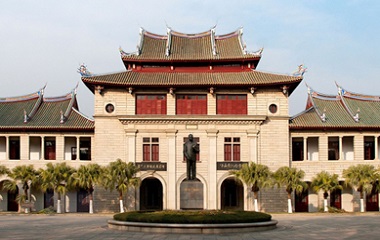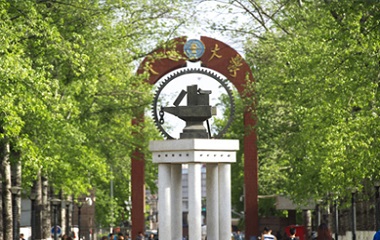
China's cultural exchange with the Pacific island countries has a long history, especially in the field of art, making it an important link in bilateral relations. As a profound expression of culture, art transcends the boundaries of language and geography. It showcases the collision of tradition and innovation and serves as a bridge that promotes mutual understanding and respect. Through diverse forms of communication, such as visual and performing arts, China and the Pacific island countries have not only shared their unique cultural characteristics, but also deepened cultural exchange, strengthened emotional bonds between people, and fostered the mutual development of art. It has also opened new pathways for social and economic cooperation between the two sides.
History of cultural exchange
Since the 1970s, as China established diplomatic relations with countries such as Fiji, Samoa, and the Cook Islands, Chinese artists began to enter the cultural landscape of the Pacific island countries through performances and art exhibitions. In 1990, China officially established a cultural exchange mechanism with the Pacific island countries, and quickly expanded into the arts.
Entering the 21st century, cultural exchange and artistic cooperation rapidly expanded, fueled by the continuous strengthening of economic and diplomatic relations. In August 2001, Fiji Television began broadcasting Channel 9 of China Central Television. In January 2003, Fiji held its first "China Week", during which Tianjin Acrobatic Troupe performed, attracting a large local audience. This marked the beginning of Chinese art's introduction to the Pacific island countries. Chinese acrobatics, Beijing opera, dance, and traditional handicraft exhibitions began to appear frequently in the Pacific islands, while traditional music, dance, and painting from these islands also entered exhibition halls and stages in China.
Building bridges through artistic exchange
As artistic exchanges gradually deepened, cultural artists from the Pacific islands began to showcase their work in China, while Chinese art groups and cultural ambassadors frequently visited the Pacific islands. Through art exhibitions, performances, and lectures, this interaction promoted mutual appreciation and cultural recognition between the two sides in the field of art.
On December 15, 2015, China Cultural Center in Suva, Fiji, was officially opened. It became an important platform for promoting cultural exchanges between China and the Pacific islands countries. Chinese artworks, such as oil paintings and photography, are regularly exhibited in Fiji, providing opportunities for Pacific island artists to showcase their works as well. On May 11, 2023, the Fiji Cultural Tourism and Art Exchange Center opened in Nansha, Guangzhou, China. The center not only displayed Fiji's traditional beverage "Kava" but also invited Fijian students to perform traditional dances and music, deepening Chinese people's understanding and interest in Fijian culture.
Artist exchanges are one of the key methods for promoting cultural integration. In 2015, the Chongqing Acrobatic Troupe was invited to perform at the 40th anniversary celebration of Papua New Guinea's independence. The following year, in September, the Ministry of Culture sent the Shenzhen Art Troupe to the country to celebrate the 40th anniversary of diplomatic relations between China and Papua New Guinea, enhancing cultural interaction and fostering friendship between the peoples of the two countries. Notably, an increasing number of young people are also getting involved and becoming an important force in promoting cultural exchange. In September 2021, Papua New Guinea University of Science and Technology hosted the "China Cultural Week" on campus, including events such as "Chinese Film Week", "Chinese Calligraphy Contest", and "Chinese Song Contest". These diverse artistic forms deepened local students' understanding of Chinese culture and provided a richer platform for grassroots exchange between the two countries.
In addition to performing arts and exhibitions, educational cooperation in the arts has also played a vital role in promoting cultural integration. In 2016, the Ministry of Commerce of China organized the "Samoa Cultural and Artistic Training Program", providing training for 20 participants from Samoa's government departments, art schools, and private institutions. This allowed Samoan cultural workers and artists to better understand China's artistic system and cultural management methods, enhancing the professionalism and depth of the two countries' art exchanges. On December 20, 2022, China handed over an arts and cultural center built with funding from Guangdong province and Huizhou city to Samoa, bringing tangible benefits to the country and its people. The construction of this cultural center marks China's ongoing support for the infrastructure of Samoa's cultural sector and stands as an important achievement in bilateral cultural exchange.
Fostering economic and cultural growth
Art exchange is not only a bridge for cultural understanding but is also an important driving force behind social and economic cooperation. As China's artistic exchanges with the Pacific island countries deepen, cooperation in areas such as tourism, education, and the cultural and creative industries has also increased. For example, the successful operation of the China Cultural Center in Fiji has created more opportunities in tourism and the cultural industry, attracting tourists and cultural enthusiasts from around the world. At the same time, art education cooperation, grassroots exchange, and the development of the cultural industry driven by cultural exchange have provided more employment opportunities and economic growth for both sides.
Looking ahead, as globalization accelerates and digital technologies are applied, art exchanges between China and the Pacific island countries will enter a new era. New technologies such as virtual reality (VR) and augmented reality (AR) will allow art exhibitions and exchanges to transcend spatial limitations, enabling more cross-cultural interactions through digital platforms. As a new generation of artists emerges and digital art platforms gain popularity, forms of artistic communication will become more diversified. Future cooperation will expand beyond traditional art forms, venturing into emerging fields such as fashion, film, and design, further promoting cultural mutual learning and innovation. The artistic bridge will continue to cross oceans, connecting China and the Pacific island countries in deep cooperation and development.
Wang Yuran is an associate Professor from the Institute of Global South Studies, Fuzhou University of International Studies and Trade; Zhao Shuo is director of the Research Center of the Pacific Island Countries at The Academy of International and Regional Communication Studies, Communication University of China










